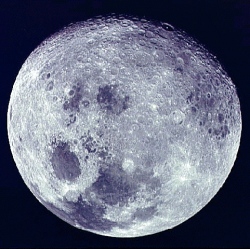
The 800kg craft would demonstrate fully automated landing technologies and place some environmental experiments on the surface, including a mini-rover. The mission proposal will be discussed by national space ministers when they meet in Naples, Italy, next month.
They will be asked to approve further development costed at about 100m euros. Full implementation – the construction of the lander, its launch and surface operation for six months – would probably total 500m euros (£400m), but any final approval would not be given before 2014.
The Moon lander is a project of the European Space Agency (Esa), and is being run out of its human spaceflight directorate. Its science is therefore geared towards the needs of future astronauts. Experiments would probe the soil for signs of resources that could be exploited by humans on the satellite’s surface. Instruments would also assess the environmental challenges of operating on the body, such as the dangers posed by radiation and lunar dust.
An industrial consortium, led by the German division of Astrium, Europe’s largest space company, was asked to scope out the basic concept for the robotic mission. This so-called Phase B1 study listed the technology requirements, and initiated some early development work and testing.
It also priced the full project – a key piece of information for ministers when they deliberate the next phase at their Council gathering on 20-21 November.
